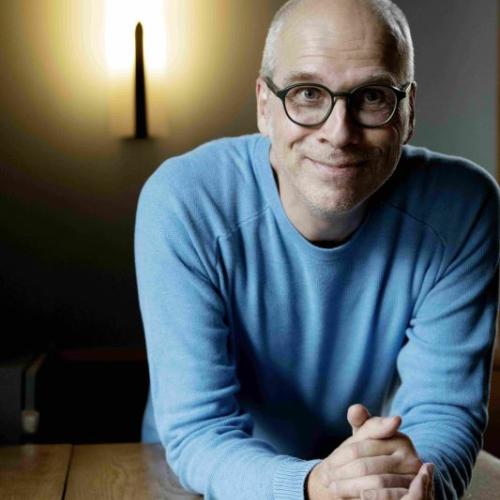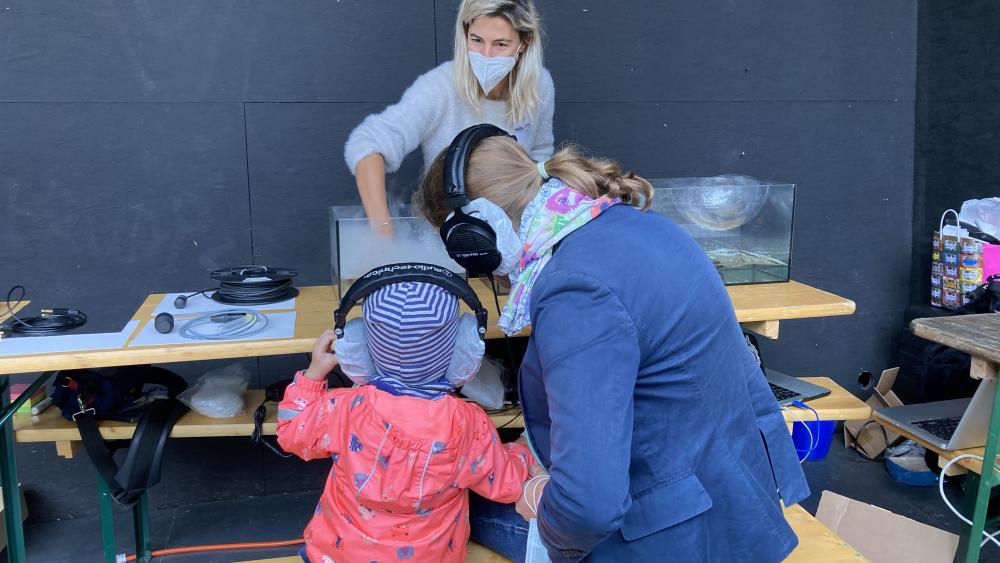
How do natural waters sound when sediments start to move or raindrops fall on their surface - and how do they sound when motorboats or other forms of use are involved? Visitors were able to hear this with Francisca Rocha Goncalves. | Photo: Angelina Tittmann
Heat, drought and heavy rainfall illustrate how important the green-blue infrastructure is for cities like Berlin. Green, these are all planted areas of a city, such as parks, gardens, street trees and even plants on facades and roofs. The blue infrastructure includes rivers, canals, lakes, but also the very small bodies of water such as ponds. Together they form connected ecosystems that provide habitat for many different species. They increase the quality of life of the inhabitants, improve the microclimate, offer the experience of nature and recreation and are meeting places with a strong social function. How can we discover these places for ourselves? And how can we achieve a sustainable transformation for more green and blue in the city and what can each of us contribute? We explored these and other questions together with partners and guests on the Long Day of Urban Nature in Berlin.
A lot to discover outdoors
Those who made their way to the open-air cinema in Friedrichshagen despite the autumn weather were able to inform themselves, try things out and exchange ideas at will: In short lectures, IGB experts reported on which species are native to Berlin's waters and which are newcomers, how rivers and lakes are changing due to climate change or how different forms of use affect them and what people expect from surrounding waters. An underwater sound exhibition, a landscape water model, experimentation and microscopy stations offered unusual perspectives, for example below the water surface. Guided tours on the topics of urban climate, water quality and light pollution as well as information stands on plants, animals and habitats in the city completed the programme.
The city of tomorrow: many concepts, but little implementation?
The changes and pressures on freshwaters and drinking water resources were the focus of the evening: the film "Auf dem Trockenen" (On dry land) showed how climate change is already affecting the Berlin-Brandenburg region and that the conflict over the increasingly scarce resource of water has long since begun.
On the podium afterwards, experts from environmental protection and research discussed with science journalist Ralf Nestler about "Heatwaves, tropical nights and heavy rainfall: how are Berlin and Brandenburg preparing for the future?" There was broad agreement on one point: we will have to live differently, but not necessarily worse. There are several ideas on how this transformation could succeed. Verena Fehlenberg from BUND, for example, praised the concept of the "sponge city", in which precipitation water is retained wherever possible. However, she also pointed out that this concept only applies to new buildings in Berlin and does not lead to any improvement in existing structures. The unsealing of inner courtyards and the greening of roofs could help here. "Saving water is very important, and we can only achieve this through a gradual, socially acceptable pricing model," Fehlenberg added. Irrigating one' s lawn or filling one' s private pool would become more expensive, but not normal, household consumption. Wolfgang Haupt from the IRS also criticised the fact that climate change is not yet sufficiently integrated into building projects. In some relatively successful cities, for example, checklists that are taken into account in urban development have proven their worth. However, the issue has not yet been sufficiently taken up by politicians and citizens. Regarding freshwaters, IGB expert Rita Adrian broadened the view beyond the city: "The main cause of ecological problems is still land use with its substance inputs. Climate change then comes on top of this for rivers, lakes and groundwater and exacerbates the situation." She therefore called on politicians to take precautionary measures to better protect nature and natural resources.
The following partners were on board: Leibniz-Zentrum für Agrarlandschaftsforschung (ZALF) | Wassernetz-Initiative BUND Berlin | Bildung trifft Entwicklung (BtE) | Leibniz-Institut für Raumbezogene Sozialforschung (IRS) | Leibniz-Institut für Zoo- und Wildtierforschung (IZW) | Koordinierungsstelle für Umweltbildung Treptow-Köpenick
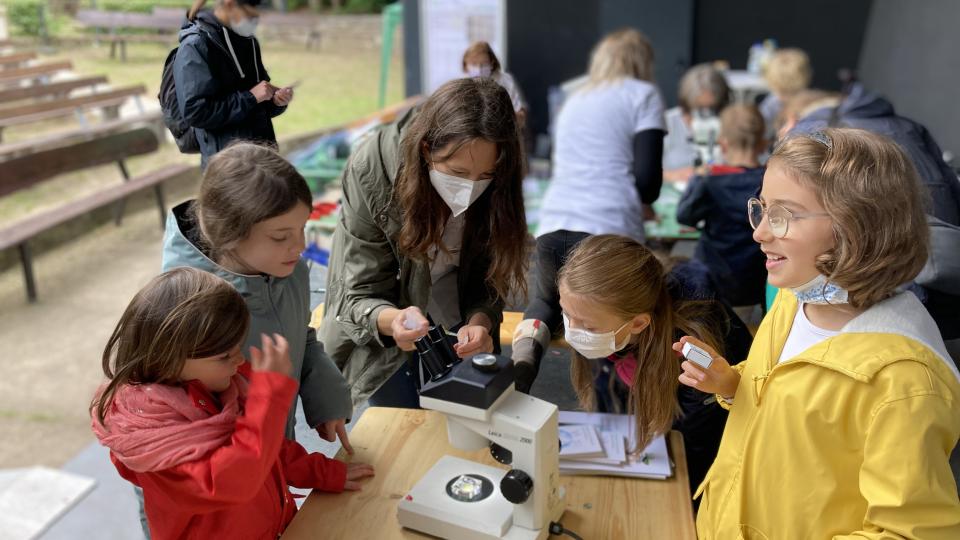
What does the water flea actually feed on? Algae, of course! At the IGB stand, young and old could feed these tiny aquatic organisms and then marvel at their bulging green bellies under the microscope. | Photo: Angelina Tittmann
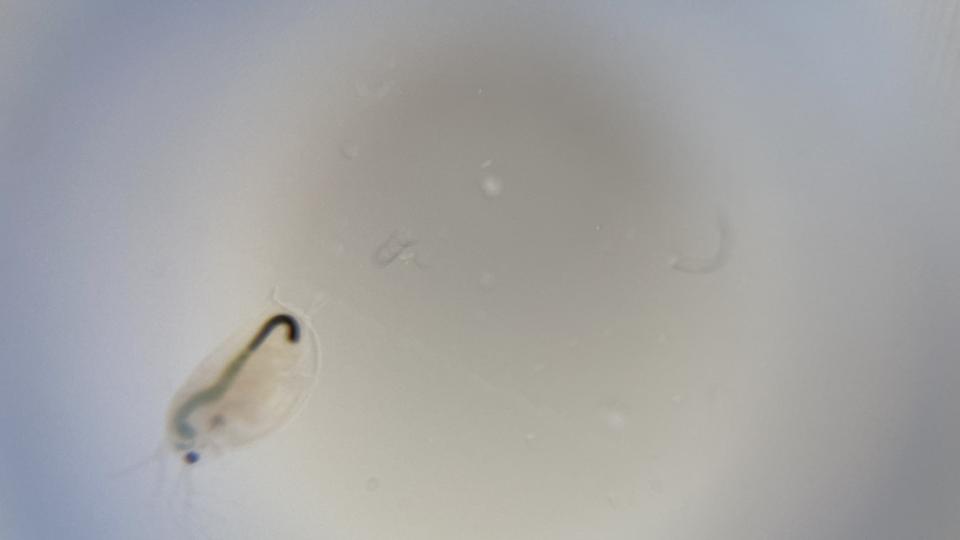
Have you ever had a water flea in front of your camera lens? No? Then visit our microscopy photo station next time. | Photo: Angelina Tittmann
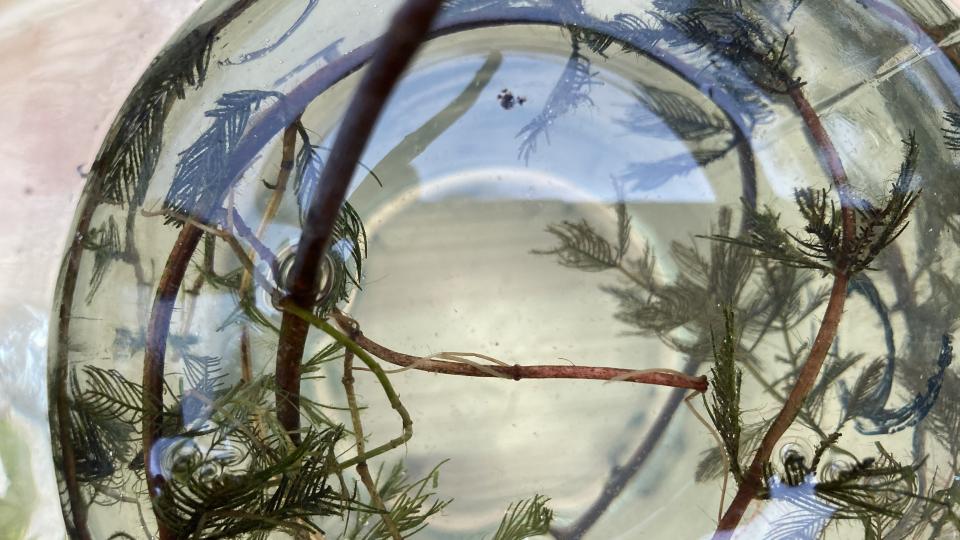
IGB researcher Sabine Hilt brought aquatic plants from Lake Müggelsee with her. The ecologist explained why they are an important part of the ecosystem, even if they sometimes restrict swimming pleasure in the shallows. | Photo: Angelina Tittmann

At the end, Christian Marx (TU Berlin), Verena Fehlenberg (BUND), Wolfgang Haupt (IRS), Rita Adrian (IGB) and Gunnar Lischeid (ZALF) discussed on the podium the topic "Heatwaves, tropical nights and heavy raifnall: how are Berlin and Brandenburg preparing for the future? | Photo: Angelina Tittmann






